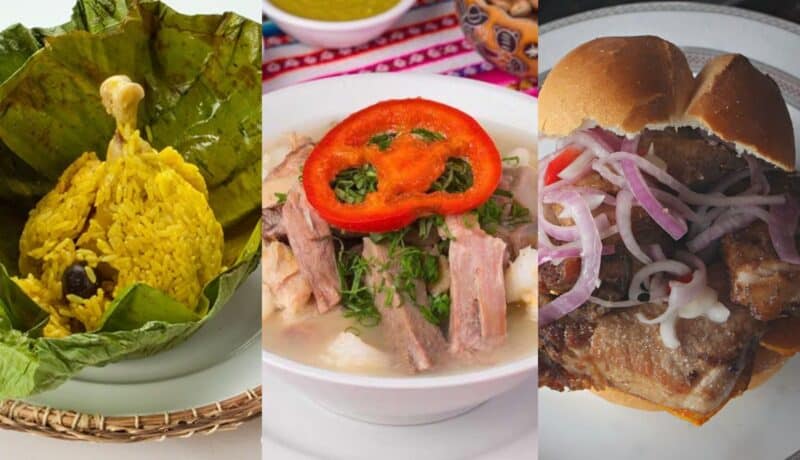
Peruvian Breakfasts: A Journey of Flavors and Traditions
In Peru, breakfast is more than just a meal; it reflects the history, geography, and identity of its people. On the coast, sandwiches and bread with meat are popular, while in the mountains, soups and Andean grains are prevalent. In the jungle, plantains and smoked meat take center stage.
Table Of Content
- Breakfast on the Peruvian coast
- Bread with pork rinds is the king of Lima breakfasts
- Lima tamales: a historic breakfast
- Butifarra: A traditional sandwich from Lima
- Fried silverside on bread: the taste of the sea in a sandwich
- Fresh cheese and Serrano ham are the traditional breakfast foods of the coastal valleys
- Typical Coastal Drinks
- Coffee with evaporated milk: A Lima-style breakfast in a cup
- Emoliente: A medicinal drink enjoyed in Lima in the morning and evening
- Milk with oats is the traditional breakfast of the Peruvian coast
- Breakfast from the Sierra: Energy from the Andes
- Chicken broth is the powerful breakfast of the Andes
- Mote broth is a traditional Andean breakfast
- Hot quinoa: The superfood of Andean breakfasts
- The simple and powerful breakfast of the Andes: potato and egg.
- Serrano bread with cheese is the traditional Andean breakfast
- These are typical drinks from the mountains
- Coca mate is the ancestral infusion of the Andes
- Hot kiwicha: ancestral energy in Andean breakfasts
- Breakfast in the Peruvian jungle
- Tacacho with cecina and chorizo
- Juane de gallina is the gastronomic treasure of the Peruvian jungle
- Nina Juane is the light version of the classic Amazonian dish
- Inchicapi is the ancestral soup of the Peruvian jungle
- Amazonian Fish Soup: Energy and flavor of the jungle
- Patacones: The crunchy flavour of the Peruvian jungle
- These are typical drinks from the Peruvian jungle
- Masato is the ancestral drink of the Peruvian jungle
- Chapo is the sweet refuge of the Peruvian jungle
- Aguajina: The Star Soft Drink of the Peruvian Jungle
- Amazonian Juices: The Nutrition and Culture of the Peruvian Jungle
Breakfast on the Peruvian coast
Bread with pork rinds is the king of Lima breakfasts
Bread with pork rinds is one of the most traditional and popular breakfasts on Peru’s coast, particularly in Lima. This sandwich combines flavors and textures in a unique way, becoming an icon of Creole cuisine.
Chefs usually make the sandwich with crispy French bread on the outside and fluffy on the inside. They fill it with pork chicharrón, which consists of pieces of pork that cooks slowly until they become golden brown and juicy. They add sliced fried sweet potatoes to the filling for a touch of sweetness. Finally, they top the sandwich with Creole sauce made from red onions, chili peppers, lemon juice, and cilantro. The result offers a perfect contrast of crispy, juicy, sweet, and sour flavors.
This sandwich has a history that dates back to colonial times when the Spanish introduced pork to Peru. Over time, locals embraced chicharrón as a popular dish, and by the beginning of the 20th century, Lima residents adopted it as part of their Sunday breakfasts. Today, you can find pan con chicharrón in traditional bakeries, huariques, and cafés throughout the city. On Sunday mornings, families line up to enjoy it.
Pan con chicharrón is more than just food; it’s a social custom. Usually accompanied by coffee with evaporated milk or a glass of hot emoliente, it creates a complete experience that connects Peruvians with their culinary tradition.
For tourists, trying this dish is a must in Lima. You can find it in the historic center, in bohemian neighborhoods like Barranco, and in modern cafés in Miraflores. The price varies, but the sandwich’s essence remains the same: it represents Peru’s coastal identity.
Lima tamales: a historic breakfast
Lima tamales stand out as one of the most traditional breakfast foods on the Peruvian coast and a classic of Lima cuisine. Cooks prepare them using ground corn, ají panca, onions, and spices, and they traditionally stuff them with chicken or pork. After wrapping them in banana leaves and steaming them, the tamales develop a distinctive aroma that whets the appetite from afar.
They offer a mild yet tasty flavor with a slight spicy kick from the chili pepper. The filling of meat makes them juicy, while the cooked corn gives them a tender texture. Many Lima residents enjoy eating tamales with a slice of bread and, of course, a cup of coffee or hot emoliente.
Peruvians have cherished the tradition of tamales since pre-Hispanic times when Andean peoples based their diet on corn. After the Spanish arrived, they introduced new ingredients to the tamale, which then became a popular breakfast food in Lima, and vendors sell them in markets, bakeries, and street carts from early morning.
Today, tamales are not only part of the daily breakfast in Lima, but also of family celebrations and festivities. In many traditional neighborhoods of the capital city, it is common to hear vendors shouting, “Tamales! Hot tamales!”—a familiar scene in everyday city life.
For tourists, sampling a Lima tamale is a tasty way to experience the local culture. You can find them in neighborhood markets, in the historic center of Lima, or at street stalls set up at dawn.
Butifarra: A traditional sandwich from Lima
The butifarra stands out as one of the most iconic sandwiches on the Peruvian coast and serves as a classic breakfast item in Lima. Local ham, which consists of pork marinated in ají panca, garlic, spices, and vinegar, forms the base of this sandwich. Bakers prepare the ham by baking it until it becomes juicy with a slight smoky flavor.
Crispy French rolls cradle the ham, while fresh lettuce and a generous portion of salsa criolla—made with red onion, chili pepper, lemon juice, and cilantro—complete the dish. The combination results in a balanced sandwich, where the crispy bread contrasts with the soft ham, and the salsa criolla adds freshness and acidity, enhancing all the flavors. This light breakfast bursts with character and differs significantly from more substantial sandwiches like pan con chicharrón.
The history of the butifarra traces back to colonial times when the Spanish introduced pork and marinating techniques. Over time, locals embraced the ham, making it a staple at parties and celebrations. Lima residents then transformed it into a sandwich they named butifarra. Although it shares its name with a Catalan sausage, the Peruvian version has carved out its own identity and has become an integral part of the Creole culinary tradition.
Today, traditional cafés and bakeries in Lima’s historic center and Creole clubs serve butifarra as a staple. Lima residents enjoy it for breakfast and as an afternoon snack, often pairing it with strong coffee or, during jaranas, a glass of wine or pisco.
For visitors, trying a butifarra provides a glimpse into Lima’s gastronomic history with every bite. Though simple, it carries deep traditions and reflects Creole creativity and Peru’s cultural richness.
Fried silverside on bread: the taste of the sea in a sandwich
Fried silverside bread, a typical breakfast dish from the Peruvian coast, combines the best of the sea with traditional baking. Silversides, small fish with soft white flesh, are seasoned with salt, pepper, and garlic. Then, they are coated in flour or beaten egg and fried until golden brown and crispy. The fried silversides are placed inside a French bread or ciabatta roll and served with Creole sauce, mayonnaise, and fresh lettuce.
The flavor is light and fresh, with a delicious contrast between the crispy fried fish and the tangy Creole sauce. It is lighter than other traditional sandwiches, such as those with pork rinds, making it a perfect choice for those looking for a tasty yet balanced breakfast.
History and tradition
Silverside is a common fish along the Peruvian coast that has been used in soups, fried dishes, and ceviche since ancient times. As sandwiches became popular in Lima and the northern part of the country, people started putting silverside on bread, making it a popular option in markets and street food carts.
In fishing towns such as Chiclayo, Trujillo, and Chimbote, silverside on bread is a common breakfast, reflecting the region’s close relationship with the sea.
Cultural context
This sandwich is typically sold in the morning at markets and street stalls near fishing areas. Many coastal families include it in their daily routine, enjoying it with silverside and a cup of coffee, emoliente, or barley chicha in the north.
For tourists, trying this sandwich is an opportunity to experience the fresh taste of the sea in a simple, everyday dish.
Fresh cheese and Serrano ham are the traditional breakfast foods of the coastal valleys
Fresh cheese and Serrano bread is one of the simplest and most authentic breakfasts on the Peruvian coast. It reflects daily life in farming villages, where a piece of fresh, artisanal cheese made from freshly milked cow’s milk is served with serrano bread baked in wood-fired clay ovens. This meal is often complemented by black olives, homemade butter, or a drizzle of cane honey.
The flavor is mild and natural. The dense, slightly smoky bread pairs perfectly with the fresh cheese, which adds a touch of freshness and saltiness. This nutritious, light meal is ideal for those who start their workday in the fields or travelers seeking an authentic culinary experience.
This breakfast is deeply rooted in rural life. Serrano bread is baked in communal ovens using techniques passed down through the generations, and fresh cheese is produced by farming families as part of their artisanal dairy practices. For centuries, this breakfast was the staple of farmers and mule drivers because its ingredients were accessible, fresh, and energy-rich.
On Sundays, at fairs and markets in towns such as Cañete, Chincha, and Ica, you can find stalls offering this breakfast alongside farm-fresh coffee or herbal mate.
This breakfast is not only simple, but also has enormous cultural value. It symbolizes the authenticity of rural life in Peru’s coastal valleys. It is not a luxury dish found in restaurants, but rather an everyday experience that brings visitors closer to the traditions of the local people.
Enjoying pan serrano with fresh cheese allows tourists to discover the most intimate and authentic side of Peruvian cuisine. It is very different from the sophisticated dishes of haute cuisine, yet equally valuable.
Typical Coastal Drinks
Coffee with evaporated milk: A Lima-style breakfast in a cup
Coffee with evaporated milk is one of the most traditional drinks on the Peruvian coast. It pairs well with classic dishes such as bread with pork rinds or Lima tamales. Unlike instant coffee, this coffee is brewed using a technique in which hot water is slowly filtered through ground coffee in a metal or handmade drip coffee maker. The result is dark, strong, and aromatic coffee.
In Peru, it is unusual to mix it with fresh milk; instead, evaporated milk is used, an ingredient that has been prevalent in Peruvian cuisine since the early 20th century. The coffee acquires a creamier texture and an intense yet balanced flavor when evaporated milk is added, making it ideal for a hearty breakfast.
The custom of drinking coffee in Lima became popular in the early 20th century, when coffee shops spread throughout the historic city center. However, evaporated milk proved to be essential, as its higher concentration and longer shelf life made it the perfect complement to strong coffee. Over time, this combination became a morning ritual along the coast.
Today, coffee with evaporated milk is an integral part of a traditional Lima breakfast. It is served in modern cafés, huariques, and neighborhood bakeries and is a Sunday morning staple in Peruvian homes.
For tourists, trying this beverage is an important way to understand an aspect of Peruvian gastronomic culture: how simple ingredients like coffee and evaporated milk can become symbols of identity.
Emoliente: A medicinal drink enjoyed in Lima in the morning and evening
Emoliente is a traditional Peruvian drink made with roasted barley, flaxseed, medicinal herbs, and lemon juice. Served hot, its slightly thick texture, due to the flaxseed, sets it apart from other infusions.
It has a mild, herbal flavor with a hint of citrus when lemon is added. In addition to being delicious, emoliente is considered a medicinal drink because it is believed to have digestive, cleansing, and energizing properties.
Emoliente dates back to the customs of herbalists and urban healers who, since colonial times, used herbs to prepare healing concoctions. Over time, it became popular in Lima and other coastal cities, becoming an everyday drink consumed both in the morning and at night.
Emoliente vendors, known as emolienteros, are part of Lima’s urban landscape. With their metal carts, thermoses, and bottles of natural syrups, they offer this drink on street corners, in squares, and in markets from early morning until late at night.
Emoliente is more than just a drink; it’s a symbol of Peruvian urban life. In Lima, especially in traditional neighborhoods, it is a common sight to see people gathering around a cart selling emolientes, chatting with the vendor, and sharing the drink.
Emoliente is usually drunk at breakfast with bread, tamales, or sausage, but it is also common to drink it in the evening before bed to relax.
Nowadays, many emoliente sellers offer versions with added ingredients, such as aloe vera, boldo, maca, lemon verbena, and honey. These ingredients enhance the flavor and health properties of the drink.
Milk with oats is the traditional breakfast of the Peruvian coast
Milk with oats is one of the most traditional and nutritious beverages for a Peruvian breakfast. To make it, cook rolled oats with water, cinnamon, and cloves. Then, mix in fresh or evaporated milk and a little sugar. The result is a hot, thick, comforting drink ideal for enjoying with bread, cheese, or sandwiches.
Thanks to the spices, it has a mild, slightly sweet, and aromatic flavor that gives it a homemade touch. In many Peruvian coastal homes, milk with oats is the drink of choice for everyday consumption, especially for children’s breakfasts and on cold winter mornings in Lima.
Oats were introduced to Peru during the colonial era and quickly became part of the local diet due to their nutritional value and versatility. On the Peruvian coast, the tradition of drinking oats with milk emerged in the 20th century when evaporated milk became a staple of the national cuisine.
Since then, oat milk has become an essential homemade drink passed down from generation to generation. It is still prepared today at market breakfast stalls and street carts, offering workers a quick and inexpensive morning meal.
Milk with oats is considered a family drink and a symbol of warmth and tradition. It is a staple in the daily diet of many coastal families and so popular that it can be found on the streets of Lima alongside other traditional beverages, such as emoliente and café pasado.
For tourists, trying a cup of milk with oats allows them to experience the daily lives of Lima’s residents beyond gourmet cuisine. It allows them to discover the flavors of simplicity and nutrition that characterize Peruvian cuisine.
Breakfast from the Sierra: Energy from the Andes
Chicken broth is the powerful breakfast of the Andes
Chicken broth is one of the most traditional and hearty breakfasts in the Peruvian highlands. This hot soup is made with free-range chicken, noodles, potatoes, and aromatic herbs. In many cases, it is garnished with hard-boiled eggs and spring onions. Served in a deep, steaming bowl, this hearty meal will comfort your body and fill you with energy to face the long Andean days ahead.
The flavor is intense and natural. The Creole chicken, which is raised on farms and has firmer meat than industrial chicken, gives the broth a deep, authentic flavor. The noodles add texture, the potatoes add softness, and the hard-boiled egg makes it an even more nutritious meal.
The tradition of eating soup in Peru has ancient roots. Pre-Hispanic cultures drank broths made from grains and tubers to withstand the early morning cold. With the arrival of chickens during the colonial period, the dish evolved into the chicken broth we know today.
In the highlands, this soup became an everyday breakfast, especially at markets and street carts, where soup stalls open at dawn to serve workers and travelers.
Chicken broth is more than just food; it’s also a social custom. In many Andean cities, going to the market early and sharing a bowl of broth is part of the daily routine. Chicken broth is also believed to have restorative and energizing properties, making it a popular choice for regaining strength after a hard day’s work or for curing a hangover.
In cities such as Cusco, Ayacucho, Huancayo, and Puno, chicken broth is an essential part of breakfast, especially during the cold months.
Mote broth is a traditional Andean breakfast
Mote broth is one of the most traditional breakfasts in the Peruvian highlands. It is made with mote, which is large, white, boiled corn, and is served with beef, lamb, pork, Andean potatoes, and aromatic herbs such as huacatay or paico. Served piping hot in deep bowls, this hearty, nutritious soup is perfect for combating cold Andean mornings.
The flavor is deep and rustic. The mote corn provides a soft, slightly floury texture; the meat adds substance; and the native herbs give the soup a fresh, distinctive aroma, distinguishing it as a dish of mountain cuisine.
Mote has been a staple food in the Andean diet since pre-Hispanic times. The ancient inhabitants of the Andes consumed it boiled or in soups to obtain energy during long days of work in the fields. With the arrival of meat from the Spanish, mote broth was enriched and became an essential dish in mountain breakfasts.
Today, mote broth is still alive and well in the markets and rural communities of regions such as Cusco, Ayacucho, Huancayo, and Puno, where locals consider it an essential food for starting the day with energy.
Mote broth is much more than just food; it is a symbol of Andean identity. It is usually eaten very early in the morning at markets, where entire families gather around a steaming bowl before starting their day. It is also traditional at local festivals and fairs, where mote symbolizes abundance and community unity.
In many towns, it is accompanied by ground chili pepper or rocoto, which give it a spicy touch and provide energy to withstand the high altitude climate.
Hot quinoa: The superfood of Andean breakfasts
Hot quinoa is a thick, aromatic beverage traditionally enjoyed for breakfast in the Peruvian highlands. It is made by cooking quinoa grains in water or milk and sweetening them with sugar or honey. Spices such as cinnamon and cloves are added for flavor. The result is a creamy, nutritious, comforting beverage, perfect for starting the day in the Andes’ cold climate.
It has a mild, slightly sweet flavor with toasted notes, and its thick texture makes it a satisfying breakfast. In many homes, hot quinoa is served with mountain bread, fresh cheese, or boiled potatoes, creating the perfect balance of flavor and energy.
Quinoa has been cultivated in the Andes for over 5,000 years. Pre-Hispanic cultures considered it a sacred food. The Incas called it the “mother grain” because it was a staple in their diet thanks to its high nutritional value.
Over time, quinoa has been incorporated into various dishes, including a hot, drinkable version that remains one of the most popular breakfasts in the Peruvian highlands to this day. Not only is this food filling, it is also perfect for withstanding low temperatures and providing energy for agricultural activities or long Andean journeys.
Hot quinoa can be found in markets, on street carts, and in homes throughout the highlands, from Cusco to Puno. Vendors commonly offer this beverage in large aluminum pots and serve it in steaming cups or mugs, providing comfort on cold Andean mornings.
Thanks to its worldwide fame as a “superfood,” hot quinoa is now also served in tourist cafés and restaurants, where it is presented as an authentic, healthy taste of Peruvian cuisine.
The simple and powerful breakfast of the Andes: potato and egg.
In the Peruvian highlands, where potatoes are a staple food, breakfast often revolves around this ancient tuber. One of the most common and beloved dishes is potatoes and eggs, a humble yet flavorful and energizing combination that accompanies cold Andean mornings.
The dish consists of boiled potatoes (often native varieties with different colors and textures) and a fried or boiled egg. Despite its simplicity, it is a nutritious breakfast, rich in carbohydrates and proteins, and perfect for long days of agricultural work or high-altitude hikes.
Potatoes have been cultivated in the Andes for over 7,000 years and are a dietary staple in the highlands. The combination of potatoes and eggs, which are easily raised on family farms, creates a quick, inexpensive, and nutritious breakfast that has become a staple in many Andean households.
This dish exemplifies how Andean cuisine utilizes available resources to create simple yet essential meals for daily life.
Potato and egg breakfast is common in rural homes and local markets in Cusco, Ayacucho, Huancayo, or Puno. It is often served with fresh Andean cheese, ground chili, or ground rocoto, which gives it a delicious spicy touch. It is often accompanied by coca tea, herbal coffee, or hot quinoa.
For travelers, trying it means discovering the authenticity of mountain life and the importance of the potato as a cultural and nutritional symbol.
Serrano bread with cheese is the traditional Andean breakfast
A simple yet flavorful breakfast common in the villages of the Peruvian highlands is Serrano bread with cheese. The star of the meal is the Serrano bread, which is baked in wood-fired clay ovens. This gives the bread a crispy exterior, spongy interior, and light smoky aroma.
It is served with fresh, artisanal cheese made from local cow or goat milk, giving it a naturally salty flavor that contrasts perfectly with the bread’s soft interior. Together, these ingredients create a nutritious, affordable, and authentic breakfast that embodies the essence of Andean life.
Bread was introduced to the Andes during the colonial era. Over time, the mountain inhabitants adapted it to their customs, creating unique regional breads. Traditional methods such as clay ovens and wood-fired baking differentiate mountain bread from industrial bread.
Meanwhile, fresh cheese has been part of the Andean diet since pre-Hispanic times, when people began using milk for preservation. The combination of bread and cheese became a staple breakfast due to its convenience and nutritional value.
Serrano bread with cheese can be found in local markets, Sunday fairs, and rural homes. It is often accompanied by coca tea, herbal coffee, or hot quinoa, a perfect combination for cold mountain mornings.
In regions like Cusco, Ayacucho, and Cajamarca, serrano bread has even become a sought-after signature product among tourists who want to take a little piece of tradition home.
These are typical drinks from the mountains
Coca mate is the ancestral infusion of the Andes
People commonly drink coca tea, an infusion made from dried coca leaves, at breakfast and throughout the day in Andean villages. It has a herbal and slightly bitter flavor, and many claim it has energizing and medicinal properties. People believe it helps combat altitude sickness (soroche), improves digestion, and provides vitality on cold mountain mornings.
The traditional preparation process is simple yet involves steeping. People place coca leaves in hot water and steep them for a few minutes to release their aromas and benefits. They often sweeten the tea with sugar, honey, or chancaca, creating a comforting and stimulating beverage.
For over 3,000 years, Andean cultures have considered the coca leaf sacred. Pre-Hispanic cultures viewed the leaf as a symbol of connection with nature and the gods. They used it in rituals and ceremonies, as well as to boost energy.
After the arrival of the Spanish, coca consumption continued but adapted to more everyday forms, such as the infusion known today as coca tea. Today, coca tea remains an essential beverage in mountain diets and connects ancestral traditions with modern life.
In Andean cities, vendors widely offer coca tea to tourists as a natural way to help them acclimate to the altitude. Tourists typically enjoy it with light breakfasts, such as mountain bread with cheese or boiled potatoes, and many people drink it at night to relax.
For travelers, drinking coca tea is more than just staying hydrated; it’s participating in an ancient tradition that continues to this day in the Andes.
Hot kiwicha: ancestral energy in Andean breakfasts
Hot kiwicha is a traditional beverage from the Peruvian highlands. Chefs cook kiwicha grains in water or milk and sweeten them with sugar or honey. They add cinnamon and cloves for flavor. Its slightly thick texture and mild flavor make it a nutritious and comforting breakfast that helps combat the cold of Andean mornings.
Kiwicha, also known as amaranth, is an ancient Andean grain that is small in size but enormous in benefits. The Andean people have nourished themselves for centuries with this superfood, which is rich in protein, calcium, iron, and fiber.
Pre-Hispanic cultures cultivated kiwicha more than 4,000 years ago. Like quinoa, the Incas considered it a sacred grain because it provided the energy needed to withstand the high altitude and long days of work in the fields.
Over time, various home recipes incorporated kiwicha, with one of the most popular being the hot, drinkable version that remains a staple breakfast in Andean regions today.
In the markets and on the street carts of Cusco, Ayacucho, Huancayo, and Puno, vendors commonly serve large pots of hot kiwicha in steaming cups from dawn onward. They often pair it with serrano bread, fresh cheese, or Andean tamales, creating a complete and energizing breakfast.
Thanks to the global superfood boom, tourist restaurants and cafés have also embraced kiwicha, offering it as a healthy, ancestral experience for travelers.
Breakfast in the Peruvian jungle
Tacacho with cecina and chorizo
Tacacho with cecina and chorizo stands out as one of the most emblematic dishes of the Peruvian jungle and many people regard it as the quintessential Amazonian breakfast. The name derives from the Quechua words taka and chu, which mean “beaten” and “dough,” respectively, referring to how cooks roast or fry the plantain and then flatten it to create a compact dough.
The dish combines three main ingredients: tacacho, made with mashed plantains and lard; cecina, salted and smoked pork fried before serving; and spicy, juicy Amazonian chorizo, which adds intensity to the dish. The blend of flavors is unique; the sweetness of the plantain contrasts with the smokiness of the meat and the mild spiciness of the chorizo.
Chefs usually serve tacacho in medium-sized balls, typically pairing it with cocona sauce or ají charapita, which add a fresh, spicy touch characteristic of Amazonian cuisine. People often enjoy this hearty, energetic breakfast with typical regional drinks, such as aguajina or plantain chapo, which complete the meal and reflect cultural identity.
Tacacho with cecina and chorizo is more than just food; it’s a symbol of the Peruvian Amazon, reflecting the region’s rich products and traditions.
Juane de gallina is the gastronomic treasure of the Peruvian jungle
Juane de gallina, the most emblematic dish of the Peruvian Amazon, serves as a true cultural symbol. Families traditionally prepare it for the Feast of San Juan on June 24, taking it along for walks by the river or sharing it at gatherings. Today, people enjoy it year-round.
Chefs season rice with saffron, spices, and cilantro to create the dish. They add a piece of chicken, a hard-boiled egg, and an olive to the rice. They wrap the entire filling in bijao leaves, which keep the food fresh for hours and impart a distinctive aroma and flavor.
The rounded shape of juane resembles the head of Saint John the Baptist, which is why it has become the emblematic dish of this Amazonian festival. Beyond its symbolism, juane offers a nutritious meal: the rice and egg provide energy, the chicken delivers protein, and the local herbs contribute a unique flavor.
Cooks typically serve it with chonta salad, fried plantains, or tacacho, and people enjoy it alongside traditional beverages like aguajina, masato, and camu camu soda.
Juane de gallina is more than just a dish; it is an expression of the cultural identity of the Peruvian jungle, reflecting the region’s rich products and its people’s unity around tradition.
Nina Juane is the light version of the classic Amazonian dish
The Nina Juane is one of the most beloved variations of the traditional Peruvian jungle dish, the Juane. Though less well-known than juane de gallina, nina juane occupies a special place in jungle cuisine. It offers a lighter yet equally tasty alternative, making it ideal for those looking to try a traditional dish with a twist.
Inchicapi is the ancestral soup of the Peruvian jungle
Inchicapi is one of the most traditional and emblematic soups of the Peruvian Amazon region. Its name comes from the Quechua words “inchik” and “capi.” “Inchi” means peanut, and “capi” means soup. Thus, it literally translates as “peanut soup.”
It combines jungle-native ingredients such as roasted and ground peanuts, free-range chicken, cassava, corn, green plantain, and sacha culantro leaves. The result is a thick, nutritious, highly aromatic soup often served for breakfast and lunch in Amazonian markets.
Preparing it provides energy and sustenance, making it ideal for long days of work in the jungle.
Amazonian Fish Soup: Energy and flavor of the jungle
Fish soup ranks as one of the most common and beloved dishes in the Peruvian jungle. People typically consume it for breakfast or lunch early in the morning.
Patacones: The crunchy flavour of the Peruvian jungle
Patacones are a classic and popular side dish in Peruvian jungle cuisine. Cooks make them with green plantains, a staple of the Amazonian diet.
Patacones pair perfectly with typical dishes such as tacacho con cecina, juanes, and Amazonian soups. Diners can also savor them on their own with cocona or charapita chili sauce.
In addition to their flavor, patacones symbolize the importance of the bellaco plantain in the Amazonian diet. This versatile, nutritious food can feature in a variety of dishes. Their crunchy texture and neutral flavor complement the intense flavors of Amazonian cuisine perfectly.
These are typical drinks from the Peruvian jungle
Masato is the ancestral drink of the Peruvian jungle
Masato, the quintessential traditional drink of the Peruvian Amazon, symbolizes hospitality in jungle communities. People make it from cooked and fermented cassava, adding water and sometimes sugar or chancaca for sweetness. Depending on the fermentation time, masato ranges from mild and sweet to high in alcohol content.
Masato serves as much more than a drink; it plays an integral role in Amazonian culture. Traditionally, women took responsibility for preparing masato, even chewing the cooked cassava to facilitate fermentation. However, this step is no longer necessary.
Masato refreshes, nourishes, and provides energy because cassava serves as an important source of carbohydrates.
Today, it remains a symbol of cultural identity.
Chapo is the sweet refuge of the Peruvian jungle
Chapo is one of the most beloved traditional drinks in the Peruvian Amazon. To make it, you boil ripe plantains and mix them with water or milk. Then, you sweeten it with sugar, honey, or chancaca. Its creamy, thick texture and sweet flavor make it a popular breakfast drink in the Amazon.
In many rainforest families, chapo replaces coffee or hot chocolate as a natural, native alternative.
Its simplicity, flavor, and energizing properties have made it one of the region’s most emblematic drinks.
Aguajina: The Star Soft Drink of the Peruvian Jungle
Aguajina is one of the most popular and refreshing drinks in the Peruvian Amazon.
Beyond its refreshing function, aguajina plays an important role in Amazonian cuisine and culture.
Amazonian Juices: The Nutrition and Culture of the Peruvian Jungle
People commonly use cocona to make refreshing, acidic, and light juice, which they believe has digestive and purifying properties. The fruit resembles a round, orange tomato.
Camu camu, a small reddish or purple fruit, boasts one of the highest concentrations of vitamin C in the world. Its acidic and energizing juice helps strengthen the immune system.
Aguaje, a palm fruit covered in red scales, yields a thick, sweet, and tangy juice. This fruit is rich in vitamin A, antioxidants, and phytoestrogens, benefiting the skin and eyesight.
Soursop offers white, creamy pulp, and children and adults alike love its sweet, smooth juice. Many recognize it for its soothing and digestive properties.
Ubos, small yellow fruits, provide tangy, refreshing juice that riverside communities widely consume.
Shapajilla, also known as taperibá, delivers a sweet, sour, and very aromatic flavor. People use it to make traditional juices and soft drinks.




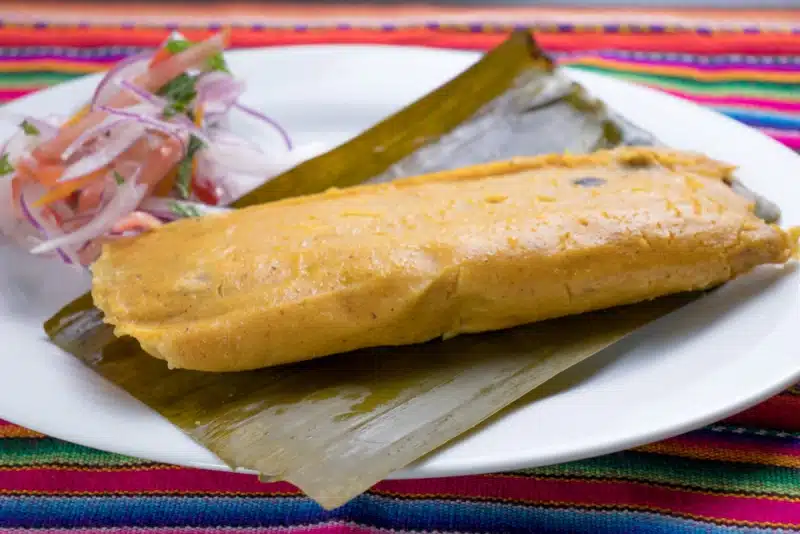
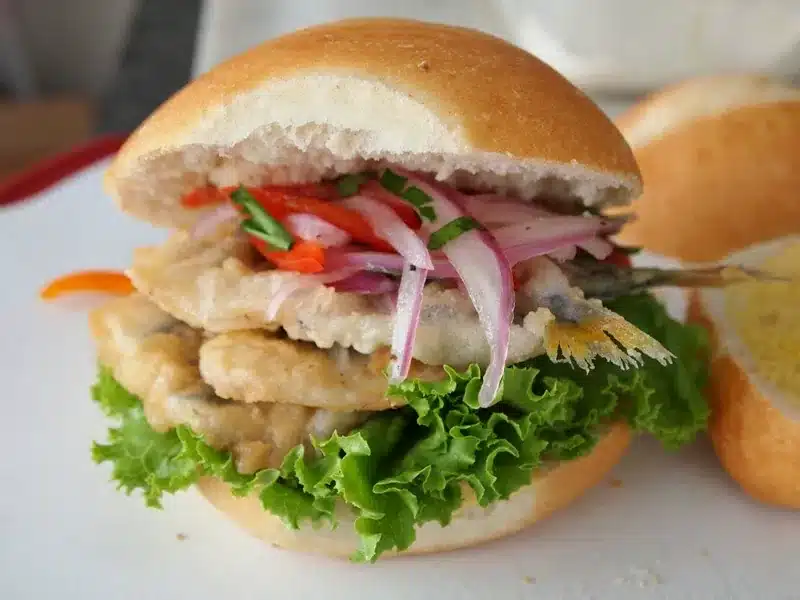
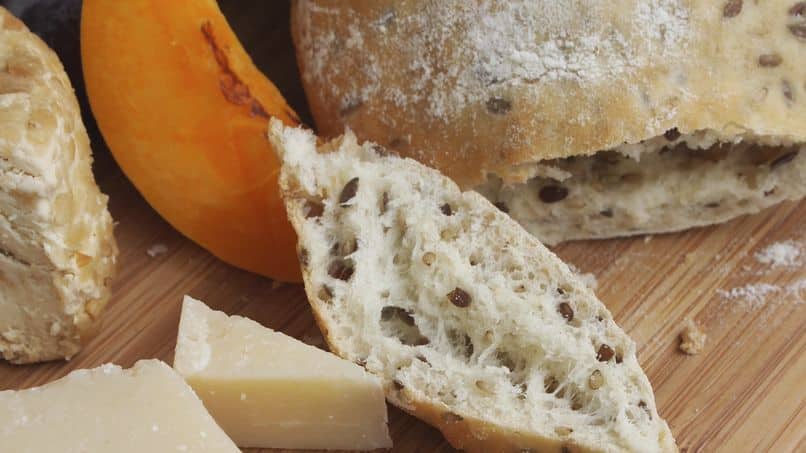

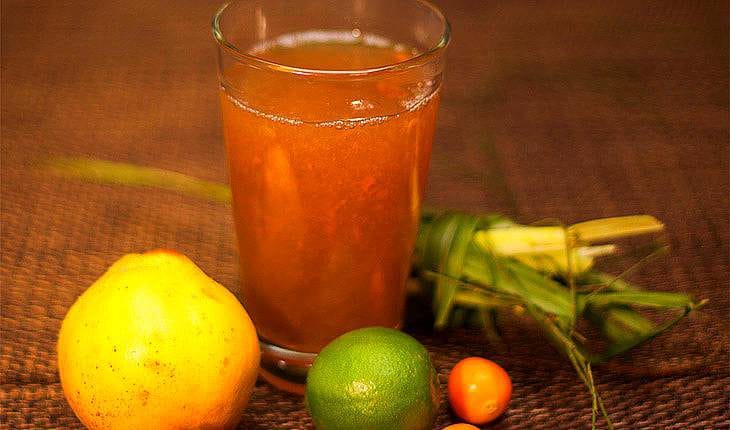
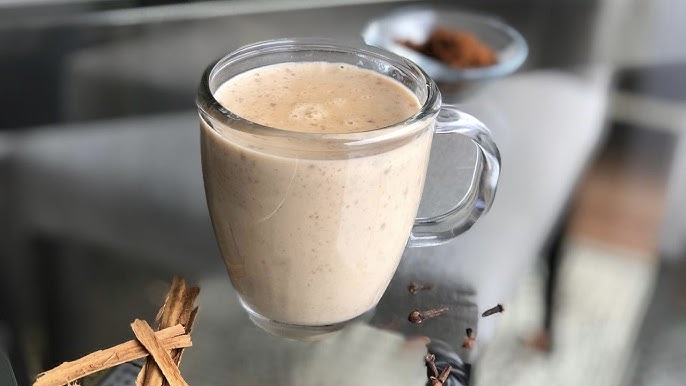
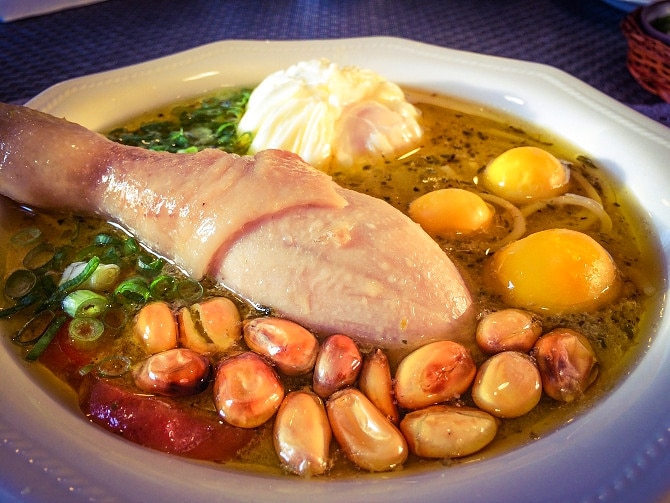
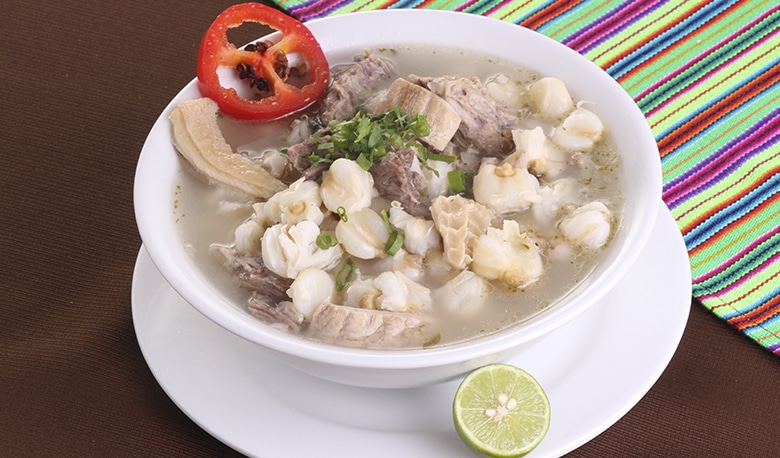

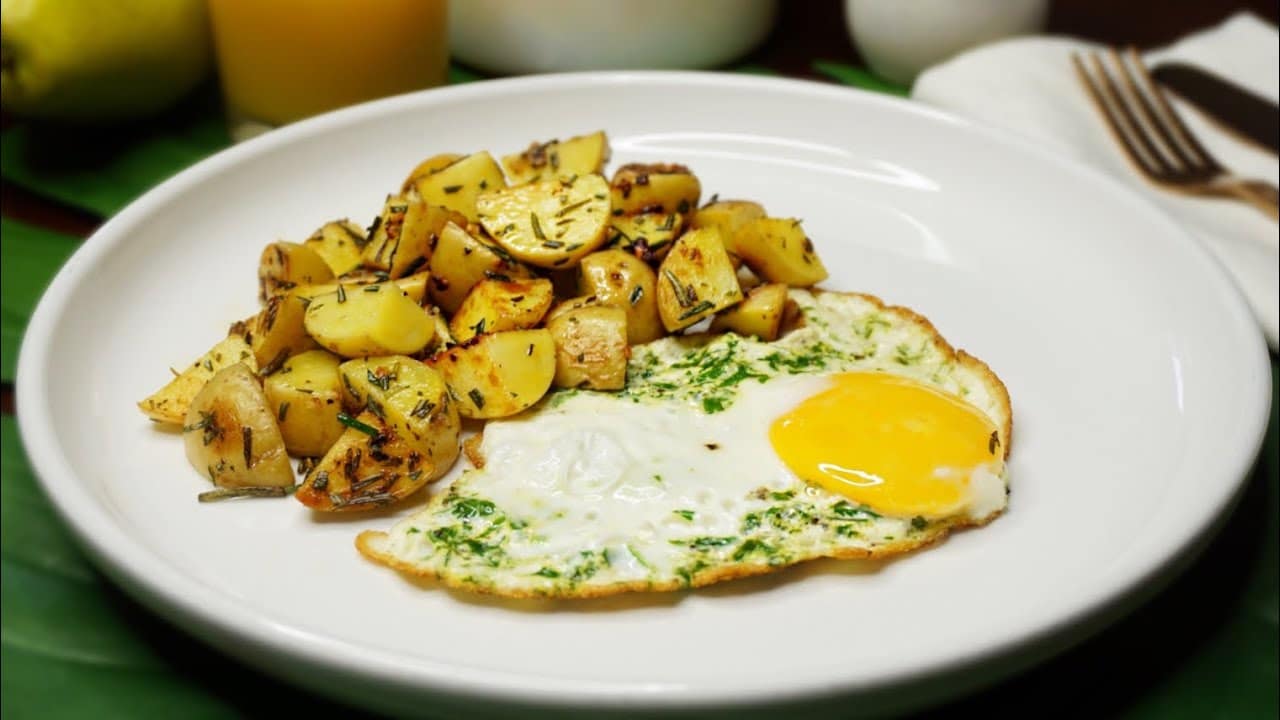
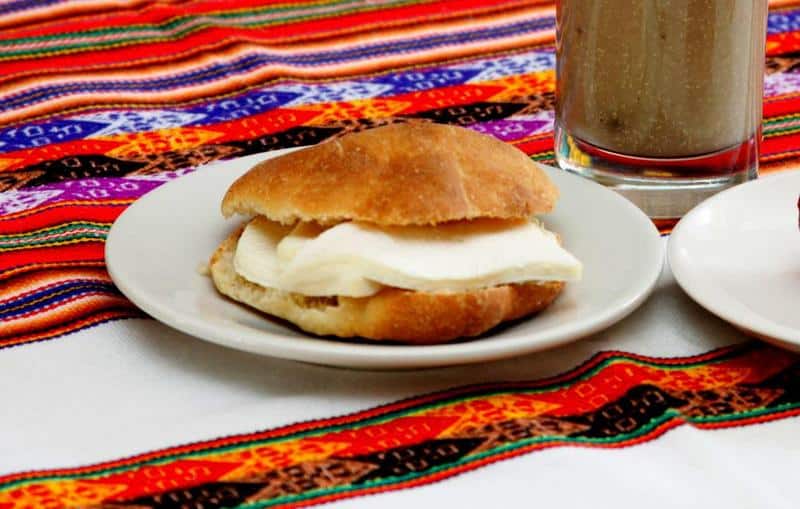
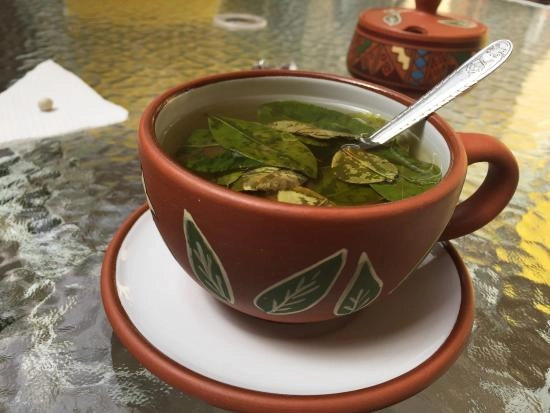


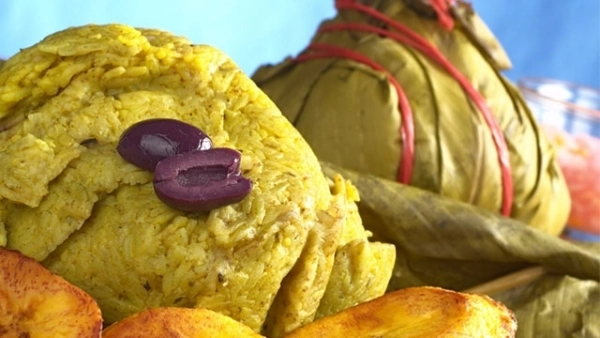

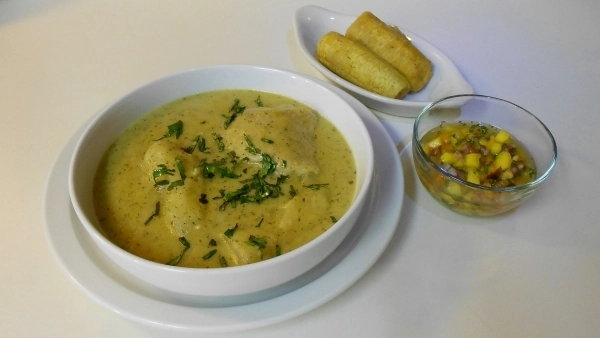
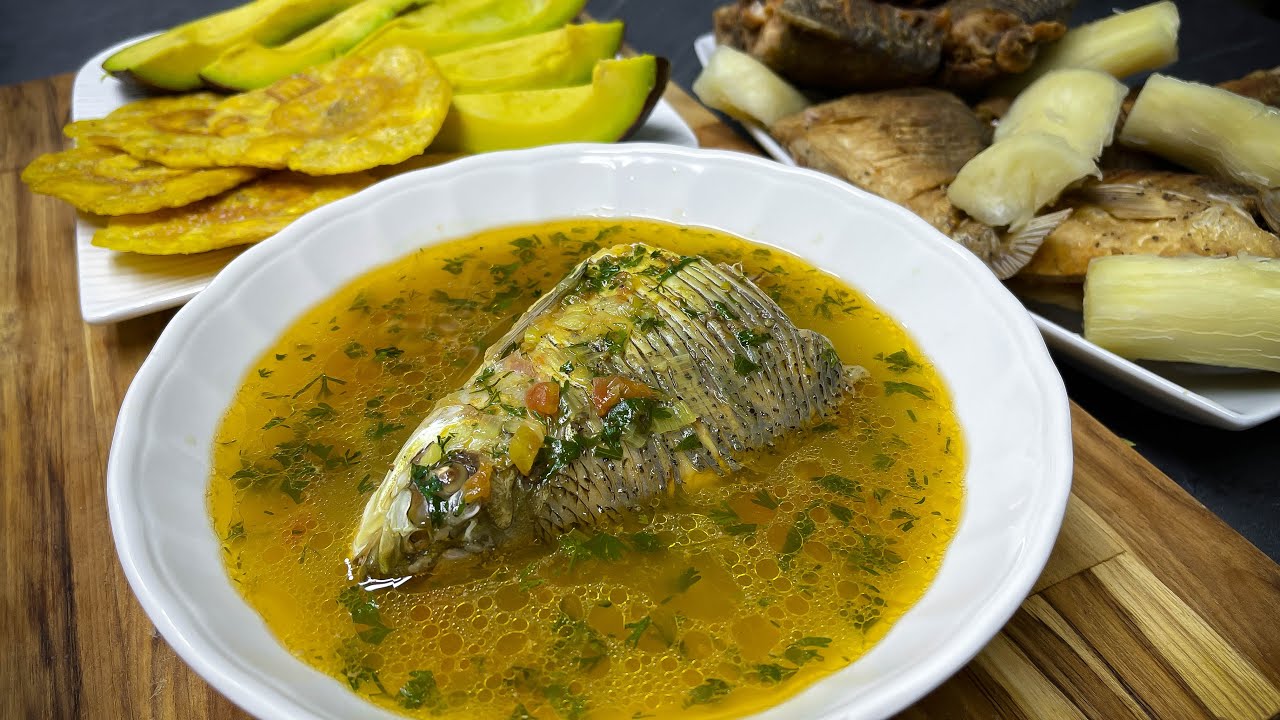
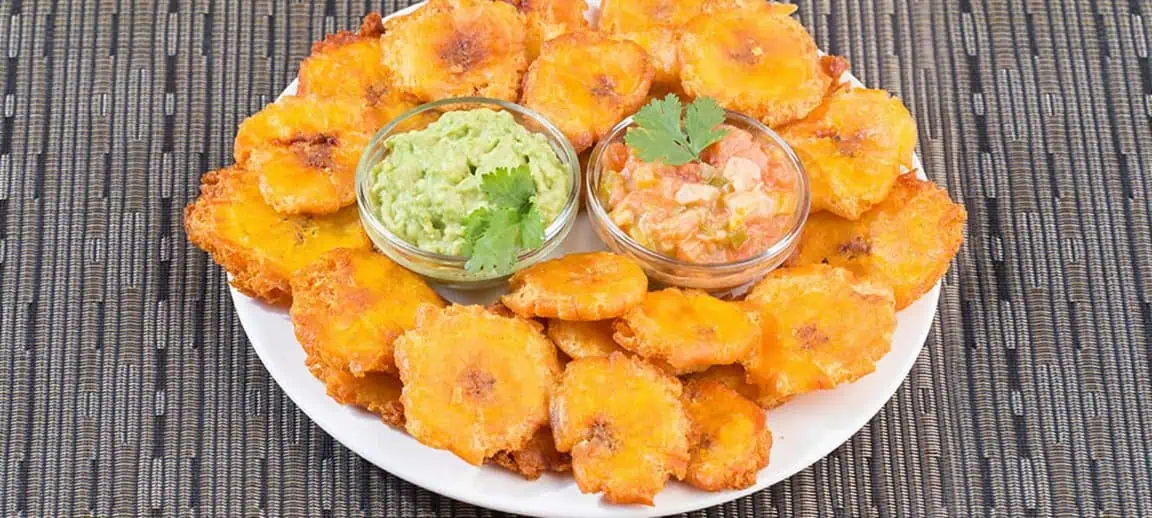

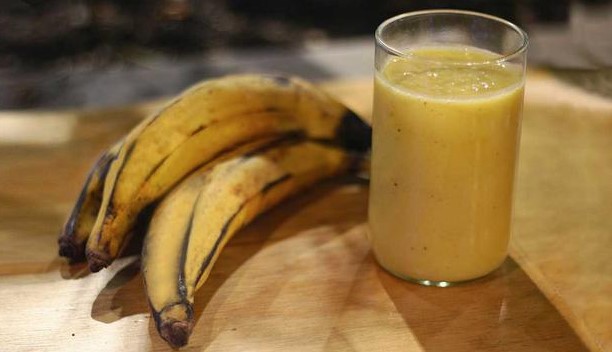

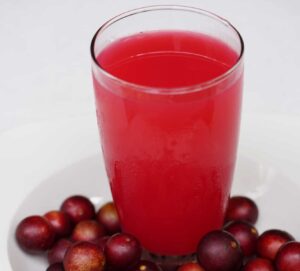
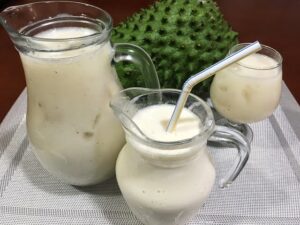




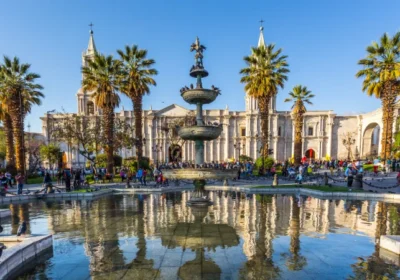
No Comment! Be the first one.